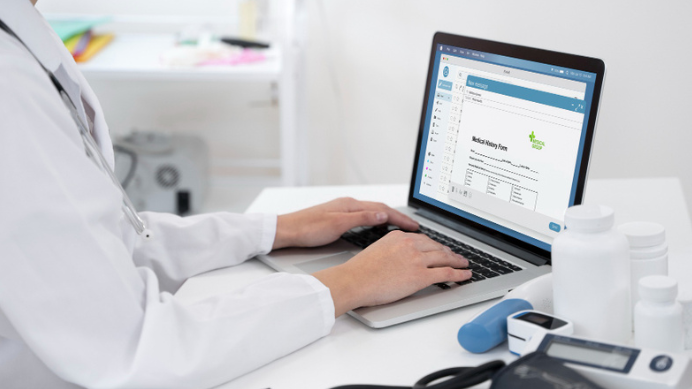
Medical Billing Automation: A Beginner’s Guide
Medical billing automation is transforming healthcare revenue cycles in 2025, offering unprecedented efficiency and accuracy for providers of all sizes. Today, more than 80% of healthcare organizations invest in automated medical billing software to streamline claims, reduce errors, and accelerate payments—a leap driven by the need to handle increasing patient volumes and complex billing requirements.
Consider the impact: A family health clinic that switched from paper-based billing to an automated medical billing system saw claim acceptance rates soar to 98%, denial write-offs drop from 8% to just 2%, and collections increase by 11% within nine months. Similarly, an orthopedic surgical center reduced its denial rate from 18% to 5% in just three months after automating its billing process.
Automated medical billing systems leverage technologies like Robotic Process Automation (RPA) and artificial intelligence to handle routine tasks, such as eligibility verification, coding, and claim submission, while also providing real-time analytics and compliance support. This minimizes human error and frees staff to focus on patient care instead of paperwork.
In the healthcare industry, adopting automated medical billing software is no longer optional—it’s essential for financial health, operational agility, and patient satisfaction. As automation continues to evolve, practices that embrace these innovations are positioned to thrive in 2025 and beyond.
What is medical billing automation?
Medical billing automation is the use of advanced software and artificial intelligence (AI) to streamline and optimize the entire medical billing process, from patient registration to claims submission and payment reconciliation.
It replaces manual, paper-based billing methods with an automated medical billing system that extracts patient data, verifies insurance eligibility, assigns accurate medical codes, and electronically submits claims to insurance companies.
Why should the medical billing system be automated?
Traditional medical billing relies heavily on manual data entry, paperwork, and repetitive administrative tasks. This approach is not only time-consuming but also highly susceptible to human error. With a medical billing system, you can reduce human errors, increase efficiency, and improve patient experience.
1. Faster reimbursement cycles
One of the most significant advantages of automated medical billing is the acceleration of the reimbursement cycle. Traditional billing methods can take weeks to process claims, while automated systems can streamline this process to just a few days.
By automating tasks such as claim submissions and follow-ups, healthcare providers can receive payments more quickly, improving cash flow and financial stability.
2. Cost reduction
Automating the billing process can lead to substantial cost savings. By reducing the need for extensive administrative staff and minimizing errors that lead to denied claims, healthcare organizations can lower operational costs.
For example, automating revenue cycle management tasks can decrease the percentage of receivables that are overdue, thus enhancing overall financial performance.
3. Enhanced productivity
With automation handling repetitive tasks, healthcare staff can focus more on patient care rather than administrative duties. This shift not only improves job satisfaction among employees but also enhances the quality of care provided to patients.
Automated systems can manage tasks like insurance verification and claims tracking, allowing staff to allocate their time more effectively.
4. Improved compliance and reporting
The healthcare industry is heavily regulated, and maintaining compliance with laws such as HIPAA is critical. Automated billing systems can help ensure that all processes adhere to regulatory standards by maintaining accurate records and generating necessary reports. This capability reduces the risk of compliance violations and the associated penalties.
5. Streamlined workflow
Automated medical billing integrates various tasks into a cohesive system, reducing the need for manual handoffs and improving workflow efficiency. This integration allows for seamless data transfer between different stages of the billing process, from patient registration to claims submission and payment tracking.
What can be automated in medical billing?
Medical billing automation can streamline numerous tasks across the entire billing cycle by leveraging automated medical billing software and systems.
Key processes that can be automated include:
1. Patient registration: Automating data extraction from registration forms to quickly capture and verify patient demographics and insurance information reduces manual entry errors and speeds up patient onboarding.
2. Insurance eligibility verification and appointment scheduling: AI bots can automatically extract insurance details from ID cards, log into insurance portals to verify coverage, and even schedule appointments, ensuring accurate billing and reducing claim denials due to eligibility issues.
3. Medical coding and compliance checks: Automation tools analyze medical documentation to assign accurate procedure and diagnosis codes compliant with HIPAA and payer requirements. This reduces coding errors, a common cause of claim rejections.
4. Charge entry: Automatically linking medical codes to services rendered and entering charges into billing systems ensures consistency and accuracy in billing.
5. Claims creation and submission: Automated systems populate claim forms with correct data and electronically submit claims to payers, adhering to payer-specific guidelines and minimizing delays.
6. Claims status tracking and adjudication: Automation monitors claim progress, identifies denials or rejections, and triggers follow-ups or corrections, expediting resolution and improving cash flow.
7. Payment posting and reconciliation: Automatically posting insurance payments and patient balances into practice management systems reduces manual reconciliation errors and administrative workload.
How to choose the right automated medical billing software?
Choosing the right automated medical billing software involves a careful evaluation of your practice’s unique needs, compliance requirements, integration capabilities, usability, customization, cost, and support.
Here is a guide on how to select the best solution:
1. Assess your practice’s specific needs: Understand your workflow, patient volume, billing complexities, and specialty requirements. This helps identify essential features such as electronic claims submission, automated payment processing, appointment scheduling, and integration with Electronic Health Records (EHR).
2. Ensure compliance with regulations: Select software that complies with medical billing regulations like HIPAA and HITECH to protect patient data, maintain confidentiality, and avoid legal penalties. Compliance also ensures accurate claims and protection against audits.
3. Verify compatibility and interoperability: The software should seamlessly integrate with your existing systems, including EHR and practice management tools, to avoid data silos and errors. Interoperability across patients, providers, insurers, and third-party vendors is crucial for smooth billing operations.
4. Evaluate the user interface and ease of use: A user-friendly, intuitive interface reduces training time and minimizes errors. Software with clear navigation and workflow customization improves productivity and staff satisfaction.
5. Look for customization options: The ability to tailor workflows, templates, and reporting to your practice’s specialty and processes ensures efficiency and reduces operational disruptions.
6. Consider data security: Given the sensitive nature of patient information, choose software with robust data security measures, including encryption and secure access controls, to safeguard against breaches.
7. Analyze cost-effectiveness: Compare pricing models—whether flat fees, per provider, or percentage of collections—and weigh them against features and scalability. Ensure the software fits your budget without compromising essential capabilities.
8. Research vendor reputation and support: Investigate providers’ reputations through customer reviews, request demos, and assess the availability of training, implementation assistance, and ongoing support to ensure smooth adoption and problem resolution.
Conclusion
Medical billing automation is revolutionizing healthcare revenue cycle management by significantly reducing errors, accelerating reimbursements, and enhancing operational transparency.
RCM AiX exemplifies this transformation by delivering an AI-first, end-to-end automated medical billing system that integrates seamlessly with EHRs, coding, clearinghouses, and payment posting.






